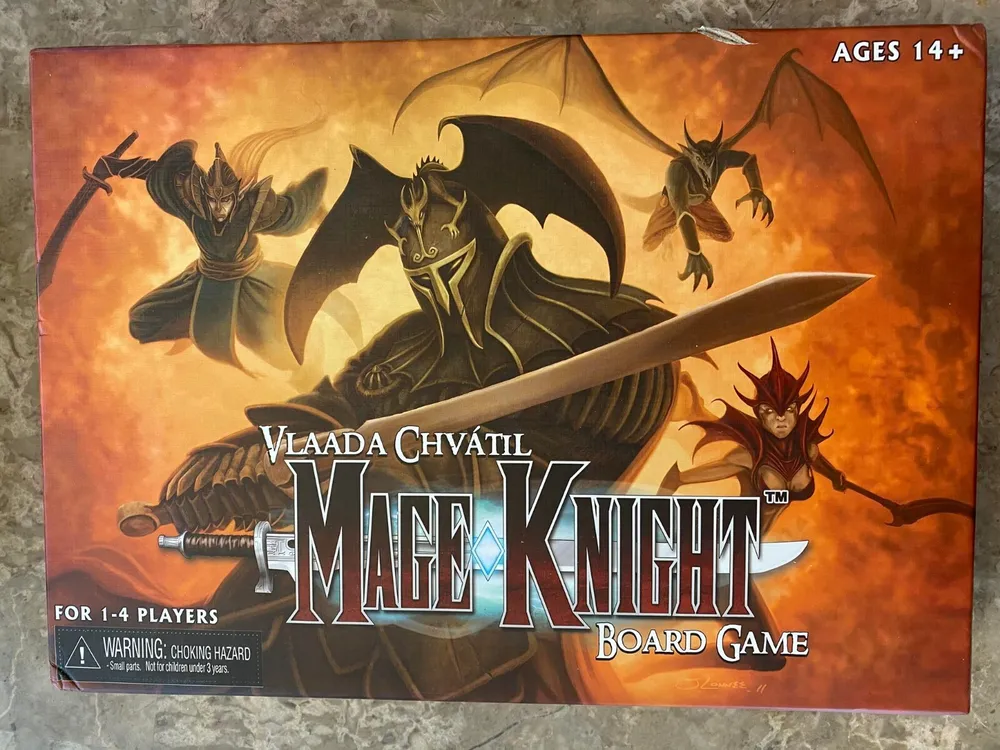Mage Knight Board Game (2011)
Mage Knight
Mage Knight is a miniatures wargame using collectible figures, created by WizKids, Inc, and is the earliest example of what is now known as a collectible miniatures game (or CMG). Designed by Jordan Weisman and Kevin Barrett, the game combines roleplaying and wargaming elements with aspects of collectible card games. It was introduced in 2000 and gained popularity due to its unique blend of Gameplay Mechanics of Mage Knight and collectible figures.
Mage Knight Board Game
In October 2010, WizKids relaunched the Mage Knight brand with the Mage Knight Board Game, a cooperative board game designed by Vlaada Chvátil. The board game combines elements of RPGs, deck-building, and traditional board games, capturing the rich history of the Mage Knight universe.
Why is Mage Knight Popular?
Mage Knight is popular for several reasons:
– It was the first CMG, which combined the collecting aspect of card games with miniatures and wargaming elements.
– The game has a post-apocalyptic setting, which adds depth and context to the gameplay.
– The Mage Knight Board Game offers a cooperative experience, allowing players to work together to achieve a common goal.
Game Components of Mage Knight Board Game
How To Setup Mage Knight Board Game
Setting up the game involves several steps:
Gameplay Mechanics and Game Objective
Player Experience
Mage Knight offers a deeply strategic and tactical experience. Players must manage their deck efficiently, making each card count due to the limited draws and the impact of the Day/Night cycles. The game is praised for its sandbox-like feel, allowing multiple approaches to solve puzzles and achieve objectives. The magic system, involving mana dice and crystals, adds another layer of complexity and strategy. Players need to balance short-term tactical decisions with long-term strategic planning, making it a rewarding but challenging experience.
Pros
Cons
Personal Thoughts on Mage Knight Board Game
Mage Knight is ideal for experienced board game enthusiasts who enjoy deep strategy, complex mechanics, and a high level of replayability. It is particularly suited for those who appreciate solo play or cooperative gameplay with a strong focus on tactical and strategic decision-making. While it may not be the best fit for casual gamers due to its complexity and lengthy playtime, it has been praised by many as one of the best games in its category, making it a must-play for serious board game aficionados.
We are supported by our audience. When you purchase through links on our site, we may earn an affiliate commission, at no extra cost for you. Learn more.

